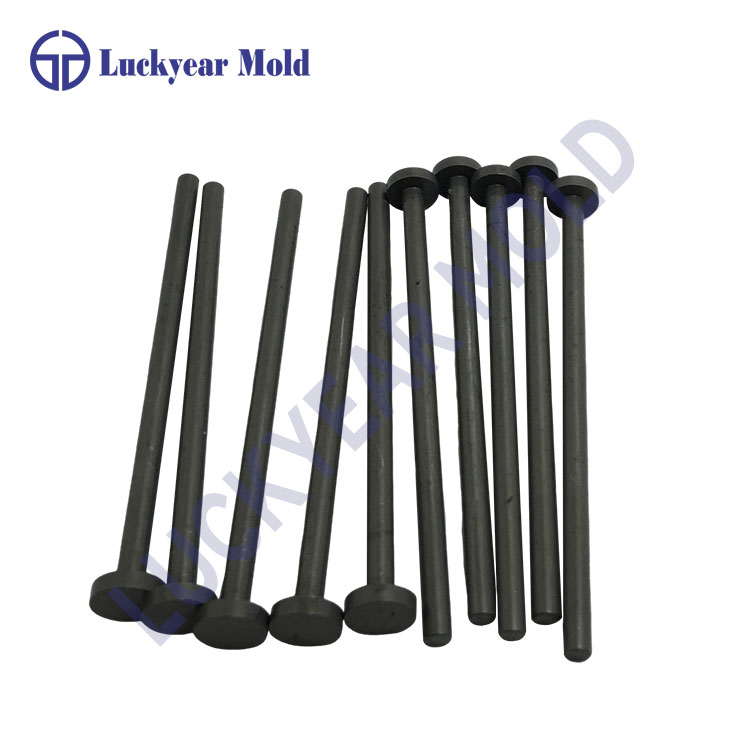Standard Ejector Pins: The Unsung Heroes of Injection Molding
2025-04-28
In the world of manufacturing and injection molding, there are a lot of components that contribute to making products faster, safer, and more efficient. But one of the most important yet often overlooked parts is the Ejector Pin. Specifically, the Standard Ejector Pin plays a crucial role in ensuring that molded parts are properly ejected from the mold after the injection process.

If you’ve ever wondered how complex parts like plastic components, metal tools, or even automotive parts are removed from their molds without damaging the product, the answer lies in the ejector pins. Let’s take a closer look at what Standard Ejector Pins are and why they’re so essential in the molding industry.
What Are Standard Ejector Pins?
Ejector Pins are simple yet incredibly effective tools used in the injection molding process. Their primary function is to push or eject the molded part out of the mold cavity after it has cooled and solidified. These pins are typically made of high-strength steel to withstand the pressure and repetitive use in the molding process.
While standard ejector pins are the go-to choice for many manufacturers, there are also specialty ejector pins that come in various shapes, sizes, and configurations depending on the requirements of the molding process. Standard ejector pins are typically cylindrical in shape and feature a smooth surface, which helps prevent any damage to the molded part during the ejection process.
How Do Standard Ejector Pins Work?
In a typical injection molding cycle, the following sequence occurs:
1. Injection: The plastic (or other material) is injected into a heated mold cavity under high pressure.
2. Cooling: Once the material has cooled and solidified into the desired shape, the mold opens.
3. Ejection: The ejector pins are activated and push the molded part out of the cavity.
4. Mold Closure: The mold is closed again, and the next cycle begins.
The ejector pins are positioned within the mold and are activated either manually or through a mechanical or hydraulic system to push the molded part out of the cavity once the molding process is complete. The smooth surface of the ejector pin ensures that the part is removed without any scratches or marks, maintaining the quality and integrity of the final product.
Why Are Ejector Pins So Important?
Ejector pins might seem like simple components, but their role in the molding process is vital. Here’s why:
1. Ensuring Smooth Ejection
- Without ejector pins, it would be nearly impossible to remove molded parts from the mold. Standard ejector pins provide the force needed to push the part out of the mold cavity, ensuring that the part is removed cleanly and without damage.
2. Protecting the Molded Part
- Ejector pins are designed with smooth surfaces and specific tolerances to ensure that they don’t scratch or mar the surface of the molded part. This is especially important in industries like automotive or consumer electronics, where the aesthetic appearance of the part is crucial.
3. Increasing Production Efficiency
- Ejector pins allow the molding process to be automated and fast. By ensuring that the part is ejected quickly and smoothly, they help reduce cycle times and increase overall productivity in manufacturing.
4. Precision and Accuracy
- The precision with which ejector pins push the molded parts out of the cavity is critical for maintaining the consistency of production. Standard ejector pins ensure that every part is ejected in the same manner, reducing variability and increasing the quality of the finished product.
5. Durability and Reliability
- Made from high-strength steel, standard ejector pins are built to last through numerous injection cycles. This durability is crucial in high-volume manufacturing, where molds can be used hundreds or thousands of times.
Types of Ejector Pins
While we’re focusing on standard ejector pins, it’s important to note that ejector pins come in different types depending on the needs of the molding process:
- Straight Ejector Pins: These are the most common and straightforward design. They are cylindrical and are used to push the part directly out of the cavity.
- Tapered Ejector Pins: These pins have a tapered shape to allow for smoother entry into the mold and less resistance when pushing the part out.
- Step Ejector Pins: Featuring a stepped design, these pins are used when parts have different sizes or contours that need to be pushed out in stages.
- Custom Ejector Pins: For complex or specialized molding needs, custom ejector pins can be designed to fit the specific geometry of the part or mold.
Materials Used for Ejector Pins
Ejector pins are typically made from high-quality steel to ensure they can withstand the stresses of repeated use in the injection molding process. Some common materials include:
- H13 Tool Steel: Known for its high resistance to heat and wear, H13 is one of the most commonly used materials for ejector pins in molds that work with high temperatures.
- D2 Tool Steel: Known for its hardness and resistance to wear, D2 steel is used in applications requiring durability and long-lasting performance.
- Stainless Steel: For applications where corrosion resistance is important, stainless steel ejector pins are used.
Applications of Standard Ejector Pins
Standard ejector pins are used in a wide range of industries and for various products, including:
- Automotive Parts: From dashboard components to bumpers, ejector pins are used to remove complex automotive parts from molds without damage.
- Consumer Electronics: Parts like phone casings, battery covers, and connectors all rely on ejector pins for proper ejection and shape retention.
- Medical Devices: Ensuring that medical device components are free from defects, ejector pins help create precision parts used in medical equipment.
- Packaging Materials: Ejector pins are often used in the production of plastic containers and packaging materials, where quick and clean ejection is necessary.
Final Thoughts
While standard ejector pins may not be the most talked-about part of the injection molding process, they are absolutely essential to ensuring high-quality production. By providing a reliable and efficient way to eject molded parts without damaging them, these unassuming components help manufacturers produce everything from household products to high-tech devices.
So, the next time you hold that perfectly molded plastic part, remember: the standard ejector pin is likely the reason it came out looking flawless!


